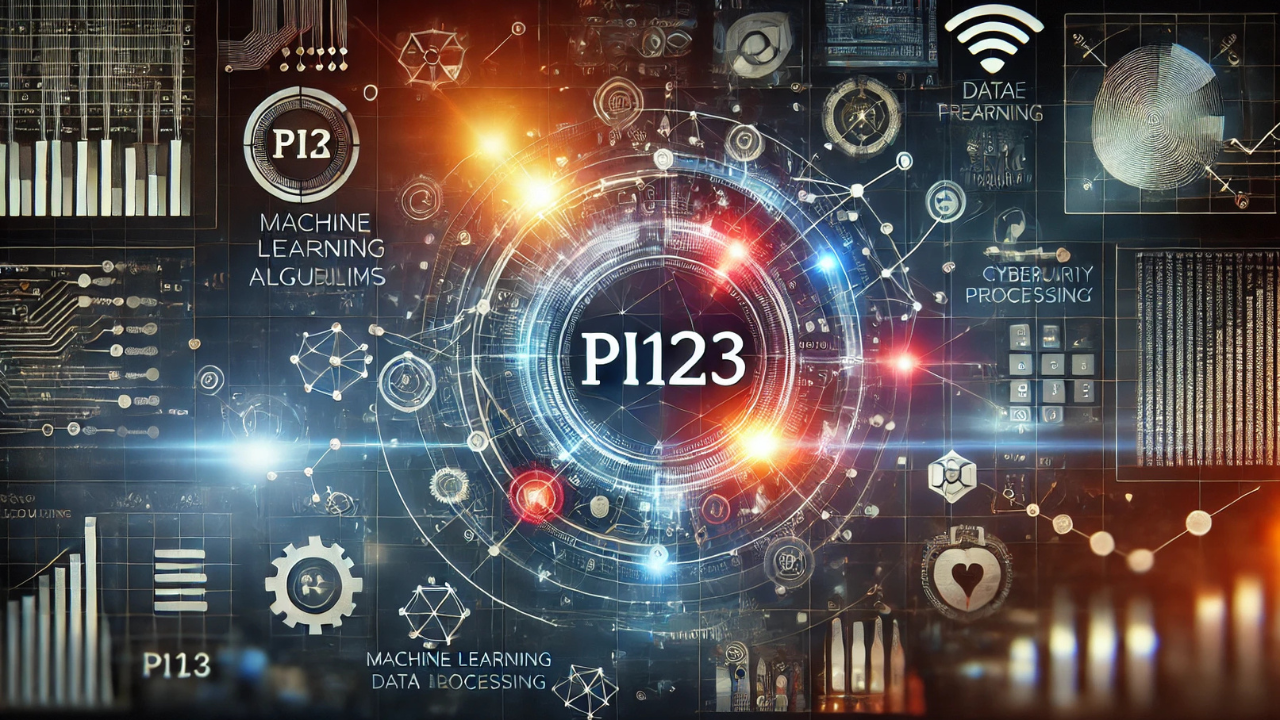Introduction
In today’s rapidly evolving technological landscape, terms like “pi123” are often tossed around in niche communities and specialized industries. But what exactly is pi123, and why is it so important? Whether you’re a beginner looking to grasp its basics or a professional trying to understand its applications, this comprehensive guide will help you dive deep into pi123.
In this article, we will explore the essence of pi123, its historical context, real-world applications, and the challenges that come with it. By the end of this guide, you’ll understand what pi123 is, how to use it effectively, its benefits, and the limitations you might face. So, let’s begin this journey of understanding pi123 and its significant role in today’s world.
What is pi123?
To understand pi123, we must first break down its meaning and context. Pi123 can be defined as a specific term used within certain technological frameworks or industries. While it might sound like a random collection of characters, pi123 has a functional role in its respective area. Often, pi123 refers to an algorithm, software, or a unique code structure employed for particular applications such as data analysis, process automation, or cybersecurity.
The origins of pi123 are tied to the rise of advanced technologies that need robust identifiers or systems to operate efficiently. Various research fields, including computer science, machine learning, and cybersecurity, have influenced its development. Over time, pi123 has evolved from a concept in academic papers to an essential tool for developers, engineers, and data scientists who require precision and reliability.
What sets pi123 apart from other similar tools or systems is its versatility and adaptability. Unlike static solutions, pi123 is often customizable, allowing users to tailor its functionality to specific needs. This makes it especially valuable for industries where flexibility is crucial. Whether used in creating complex software systems or implementing security measures, pi123 plays a significant role in ensuring that modern technology meets the demands of a fast-paced, ever-changing world.
The Functionality and Applications of pi123

Now that we know what pi123 is, let’s dive into its functionality and how it’s applied across different industries. The beauty of pi123 lies in its diverse applications, making it highly adaptable to various fields. In technology, pi123 is often used to develop algorithms for machine learning, data processing, and automation. For example, in machine learning, pi123 could be a crucial component for training data models, enabling systems to improve accuracy over time. This allows companies to leverage data more innovatively and efficiently, ultimately improving decision-making processes.
In the business world, pi123 can also play a pivotal role. Imagine a company looking to streamline its operations—pi123 could automate repetitive tasks, analyze large datasets, or create highly specialized applications tailored to unique business needs. By implementing pi123, businesses can save valuable time, reduce human error, and increase efficiency. It gives companies a competitive edge in a world where speed and precision are vital to success.
In fields like cybersecurity, pi123 has found an invaluable place. With the increasing threat of cyberattacks, pi123 can be used to bolster security measures. Whether detecting system vulnerabilities, creating encryption algorithms, or ensuring safe data transmission, pi123 offers robust solutions to safeguard sensitive information. Many companies rely on pi123-based systems to prevent unauthorized access, detect potential breaches, and protect their data.
How to Implement or Use pi123
Understanding pi123’s functionality is only half the battle. To fully harness its potential, you must know how to implement it effectively. Implementing pi123 can vary depending on the specific use case—whether for software development, data processing, or security. However, there are some common steps you’ll want to follow for successful implementation.
First, understanding the core requirements of your project is crucial. Before diving into the technical aspects of pi123, outline the problem you’re trying to solve or the task you want to automate. Once you clearly understand your project’s needs, you can determine whether pi123 is the right fit or if adjustments need to be made. The tools and resources required to implement pi123 will often depend on the environment in which you’re working. For example, if you’re using pi123 for machine learning, you’ll need datasets, computing power, and perhaps additional libraries or software frameworks.
The next step is integrating pi123 into your system or process. Whether embedding pi123 into an existing software framework or developing a new application from scratch, ensure seamless integration. Testing the implementation to verify that pi123 works as intended is also essential. Regular testing will help you catch errors early, ensuring reliable implementation.
One of the most critical aspects of using pi123 is customization. As mentioned earlier, pi123 is highly adaptable, allowing for fine-tuning to meet specific needs. This customization could include setting parameters, adjusting settings, or creating unique workflows that optimize its performance. For businesses, this flexibility means that pi123 can grow with their needs, adjusting as their demands change over time.
Potential Challenges and Limitations of pi123
Like any technology or system, pi123 is not without its challenges. One of the users’ most common issues when working with pi123 is its complexity. While it offers a great deal of versatility, this also means there can be a steep learning curve for those new to the technology. Users may struggle to maximize pi123’s full potential without proper training or guidance. This can lead to inefficiencies or underperformance, so adequate support and resources are necessary.
Another limitation of pi123 is its reliance on specific environments or platforms. While pi123 is versatile, it may not be compatible with all systems, requiring adjustments or additional integration work to function correctly. Users may also encounter issues with scalability, mainly if the system grows too large for the current implementation of pi123.
Finally, like all technology, pi123 is not immune to security vulnerabilities. Although it is often used for security purposes, the systems built on pi123 can still be susceptible to threats. It’s crucial to keep the system up to date with the latest security patches and regularly monitor it for potential issues.
Despite these challenges, the benefits of pi123 often outweigh the drawbacks. By understanding the limitations and addressing them proactively, users can maximize the potential of pi123 in their projects.
Conclusion
In conclusion, pi123 is a powerful and adaptable tool that can significantly improve many processes, from data analysis and automation to cybersecurity. Its versatility allows it to be applied across industries, providing solutions that enhance efficiency, accuracy, and security. However, to truly unlock the potential of pi123, users must invest time and resources into understanding its functionality, customizing it to their needs, and overcoming the challenges associated with its implementation.
Anyone looking to integrate pi123 into their work or project must approach it with a clear understanding of its benefits and limitations. Doing so, you’ll be well-positioned to leverage pi123’s full capabilities and ensure its successful application.
FAQs
What is the history behind pi123?
Pi123 originated as a concept in academic and technical research, evolving into a widely used tool for various applications. Its development has been shaped by the growing demand for more efficient and flexible technological solutions.
How can pi123 be applied in the tech industry?
In the tech industry, pi123 is used for algorithm development, machine learning, data processing, and system automation. It helps streamline workflows and optimize operations.
What are the common mistakes to avoid when using pi123?
Common mistakes include improper implementation, neglecting customization, and failing to test systems thoroughly. These can lead to inefficiency and errors.
Is pi123 suitable for small businesses or only large enterprises?
Pi123 is highly adaptable, making it suitable for small and large enterprises. Small businesses can leverage its flexibility to create custom solutions for their needs.
What are the best tools for implementing pi123 effectively?
The best tools depend on the specific use case but often include software frameworks, libraries for machine learning, and dedicated systems for integration and testing.
Are there any alternatives to pi123 that are worth considering?
While pi123 is highly versatile, alternatives like TensorFlow for machine learning or other specialized automation tools may be better suited depending on the application.
What is the future of pi123 in its respective field?
As industries evolve, pi123’s applications will likely expand, especially in AI, cybersecurity, and automation fields. Its adaptability ensures it will remain relevant in the years to come.
You May Also Read: https://bestinfotime.com/what-is-the-biggest-thing-in-the-world/




